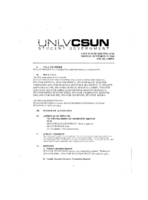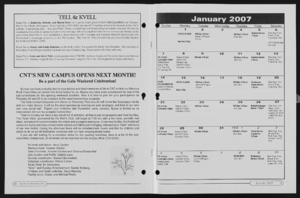Search the Special Collections and Archives Portal
Search Results

Interview with Roger Ray, October 29, 2005
Date
2005-10-29
Archival Collection
Description
Narrator affiliation: Deputy Manager, Nevada Test Site; DOE Marshall Islands; Colonel. U.S. Army
Text

Interview with Rosemary Lynch, June 8, 2004
Date
2004-06-08
Archival Collection
Description
Narrator affiliation: Franciscan Sister; Founder, Nevada Desert Experience, Pace e Bene
Text

Interview with Robert Rex Brownlee, September 10, 2006
Date
2006-09-10
Archival Collection
Description
Narrator affiliation: Astrophysicist, Alt, Test Division Leader, Los Alamos National Laboratory
Text

Interview with Oliver Wilhelm Kaufmann, November 29, 2005
Date
2005-11-29
Archival Collection
Description
Narrator affiliation: Biologist, Public Health Service
Text

Interview with Duane C. Sewell, May 20, 2004
Date
2004-05-20
Archival Collection
Description
Narrator affiliation: Operations Manager, Lawrence Livermore; Asst. Sec. of Energy for Defense Programs
Text

Interview with Kenneth Giles, February 10, 2005
Date
2005-02-10
Archival Collection
Description
Narrator affiliation: EPA Farm
Text

Interview with Elmer Jesse Sowder, June 23, 2004
Date
2004-06-23
Archival Collection
Description
Narrator affiliation: Test Director, Los Alamos National Laboratory
Access note: Audio temporarily sealed
Access note: Audio temporarily sealed
Text

Roadrunners Internationale A-12 session, October 5, 2005
Date
2005-10-05
Archival Collection
Description
Narrator affiliation: Panel discussion of Area 51 work
Text

Meeting minutes for Consolidated Student Senate, University of Nevada, Las Vegas, November 22, 2004
Date
2004-11-22
Archival Collection
Description
Includes meeting minutes and agenda.
Text
Pagination
Refine my results
Content Type
Creator or Contributor
Subject
Archival Collection
Digital Project
Resource Type
Year
Material Type
Place
Language
Records Classification

